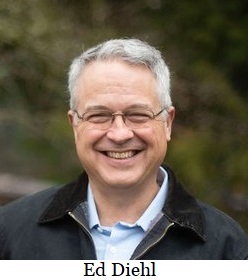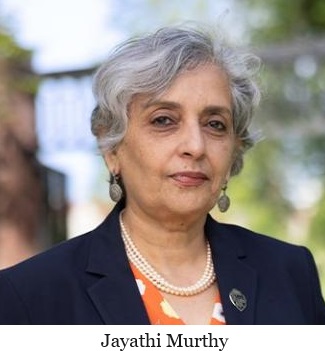HCP places constraints on forest management and research activities
In a
letter addressed to the Oregon State Land Board, Oregon State University President Jayathi Y. Murthy shook up the state's plans by not recommending to the University's Board of Trustees that they participate in management of the Elliott State Research Forest.
President Murthy has chosen not to ask the Board of Trustees to authorize OSU participation in management of the forest at this time due to Tribal and other concerns about the current strategy, including the increasing constraints being placed on the forest’s management and research activities that is believed will compromise achieving the mutually agreed goals. Those constraints come in the form of the
Habitat Conservation Plan (HCP).
In 2022, the Oregon Legislature passed
SB 1546 which established the Elliott State Research Forest consisting of lands formerly constituting the Elliott State Forest and created a new state agency, the Elliott State Research Forest Authority (ESRFA), which would contract with OSU to manage and conduct research on the forest.
The legislature extended the deadline for completion to December 31, 2023. The additional time was to allow for adjustments to the HCP based on public comment and input from the ESRFA Prospective Board and the Services (U.S. Fish and Wildlife Service and the National Marine Fisheries Service). The extended timeline also allowed for any adjustments to be reflected in the forest management plan and financial plans.
The Oregon Department of Forestry (ODF) seems to be at odds with ESRFA with their mission to lock up over 250,000 acres of public state forest lands, preventing harvesting and active forest management on about 40% of Oregon's state forests. ODF wants HCP as the desired strategy to meet the requirements of the Federal Endangered Species Act (ESA).
The ODF believes that the HCP will increase the populations of certain species listed under the ESA, such as the Northern spotted owl, marbled murrelet, and the Oregon Coast and Lower Columbia River coho. ODF hopes that the HCP will achieve ESA compliance over the next 70 years. However, the spotted owl population in the Northwest has declined in every forest service study area including protected areas. The primary reason is that the critical habitat for this bird is also the desired habitat for its apex predator, the barred owl. No HCP restrictions on timber harvesting will correct this imbalance.

Representative Ed Diehl sees the reduced harvest as fiscally irresponsible and endangers rural counties that rely on the funding. He says, "the HCP is doubling down on failed forest policies of the last 30 years. Two guiding goals of our current forest policy are increasing spotted owl populations and reducing global carbon emissions. The theory is that we can achieve these goals by increasing forest habitat and curtailing timber harvesting, the two guiding policies that continue with the HCP. The evidence shows that these goals have not, and will not, be achieved with these policies. And what is indisputable is that these policies have devastated the communities that live, work, hunt, and recreate in these forests. I’ve seen it first-hand in my district; the loss of jobs, the loss of revenue to these once-thriving rural communities, and the raging wildfires. These policies have robbed people of their livelihoods and their dignity. These policies have cost the state billions in revenue and turned our forests from an asset into a liability."
The HCP report also highlights, as an added benefit, an increase in carbon storage. The theory is that Oregon can achieve environmental goals by increasing forest habitat and curtailing timber harvesting. However, there is mounting evidence that shows it won’t happen. Carbon storage and/or carbon sequestration is mentioned multiple times in the report, and described as an important environmental outcome. The underlying assumption in the model is that locking up Oregon state forest lands in Harvest Conservation Areas, and stretching out harvest cycles to 90 plus years in other areas, are important strategies for carbon storage. Forestry researchers at the U.S. Department of Agriculture Pacific Northwest Research Station have consistently found the opposite will occur. Locking up forests ends up emitting more CO2 than sustainable harvests. The science shows that a 45-50 year timber harvest cycle is optimal for carbon storage – you grow a tree through its highest carbon storing years, harvest and ‘sequester’ that carbon in lumber to build homes, and plant another tree to repeat the cycle.
A D V E R T I S E M E N T

A D V E R T I S E M E N T
Rep. Diehl says the HCP will continue these failures under false pretenses, reducing annual timber harvests by about 40% of current levels for the next several decades. The heart of the HCP is establishing Habitat Conservation Areas, and as the report highlights, after 30 years, no harvesting inside the Habitat Conservation Areas is assumed in some of the model scenarios.
"Implicit in the HCP model is that this carbon storage policy provides a net global benefit," Diehl states. "The opposite is true, however. Whether Oregon cuts another tree down or not, the United States will continue to utilize wood products to meet growing demand for homes, paper products, and packaging. In fact, the US is a net importer of softwood lumber. And as imports from Canada continue to decline, we are left importing lumber from overseas. What this means is simple: Every tree that Oregon takes out of a sustainable harvest cycle is one more tree that must be processed overseas and transported on a diesel guzzling, carbon spewing freight ship halfway around the world. Or, homes will be built with more steel and concrete, two building products that are extremely carbon intensive. In other words, every tree that Oregon takes out of a harvest cycle is, in fact, increasing the global carbon footprint."
The ESRF was created to serve as a living laboratory for vital research on landscape-scale approaches to sustainable forest management, climate resilience, biodiversity and ecosystem functions, and eco-cultural social benefits over the long-term. The research forest can also provide Oregonians with access to forest education and recreation, as well as jobs in forest products, forestry and forest research. If ODF is set against existing research, what use is ESRF doing more research?
Oregon Natural Resource Industries (ONRI), has joined ESRF against HCP and has taken the lead to stop HCP.
--Donna Bleiler| Post Date: 2024-01-10 12:19:43 | Last Update: 2024-01-10 16:56:11 |







 Representative Ed Diehl sees the reduced harvest as fiscally irresponsible and endangers rural counties that rely on the funding. He says, "the HCP is doubling down on failed forest policies of the last 30 years. Two guiding goals of our current forest policy are increasing spotted owl populations and reducing global carbon emissions. The theory is that we can achieve these goals by increasing forest habitat and curtailing timber harvesting, the two guiding policies that continue with the HCP. The evidence shows that these goals have not, and will not, be achieved with these policies. And what is indisputable is that these policies have devastated the communities that live, work, hunt, and recreate in these forests. I’ve seen it first-hand in my district; the loss of jobs, the loss of revenue to these once-thriving rural communities, and the raging wildfires. These policies have robbed people of their livelihoods and their dignity. These policies have cost the state billions in revenue and turned our forests from an asset into a liability."
Representative Ed Diehl sees the reduced harvest as fiscally irresponsible and endangers rural counties that rely on the funding. He says, "the HCP is doubling down on failed forest policies of the last 30 years. Two guiding goals of our current forest policy are increasing spotted owl populations and reducing global carbon emissions. The theory is that we can achieve these goals by increasing forest habitat and curtailing timber harvesting, the two guiding policies that continue with the HCP. The evidence shows that these goals have not, and will not, be achieved with these policies. And what is indisputable is that these policies have devastated the communities that live, work, hunt, and recreate in these forests. I’ve seen it first-hand in my district; the loss of jobs, the loss of revenue to these once-thriving rural communities, and the raging wildfires. These policies have robbed people of their livelihoods and their dignity. These policies have cost the state billions in revenue and turned our forests from an asset into a liability."
